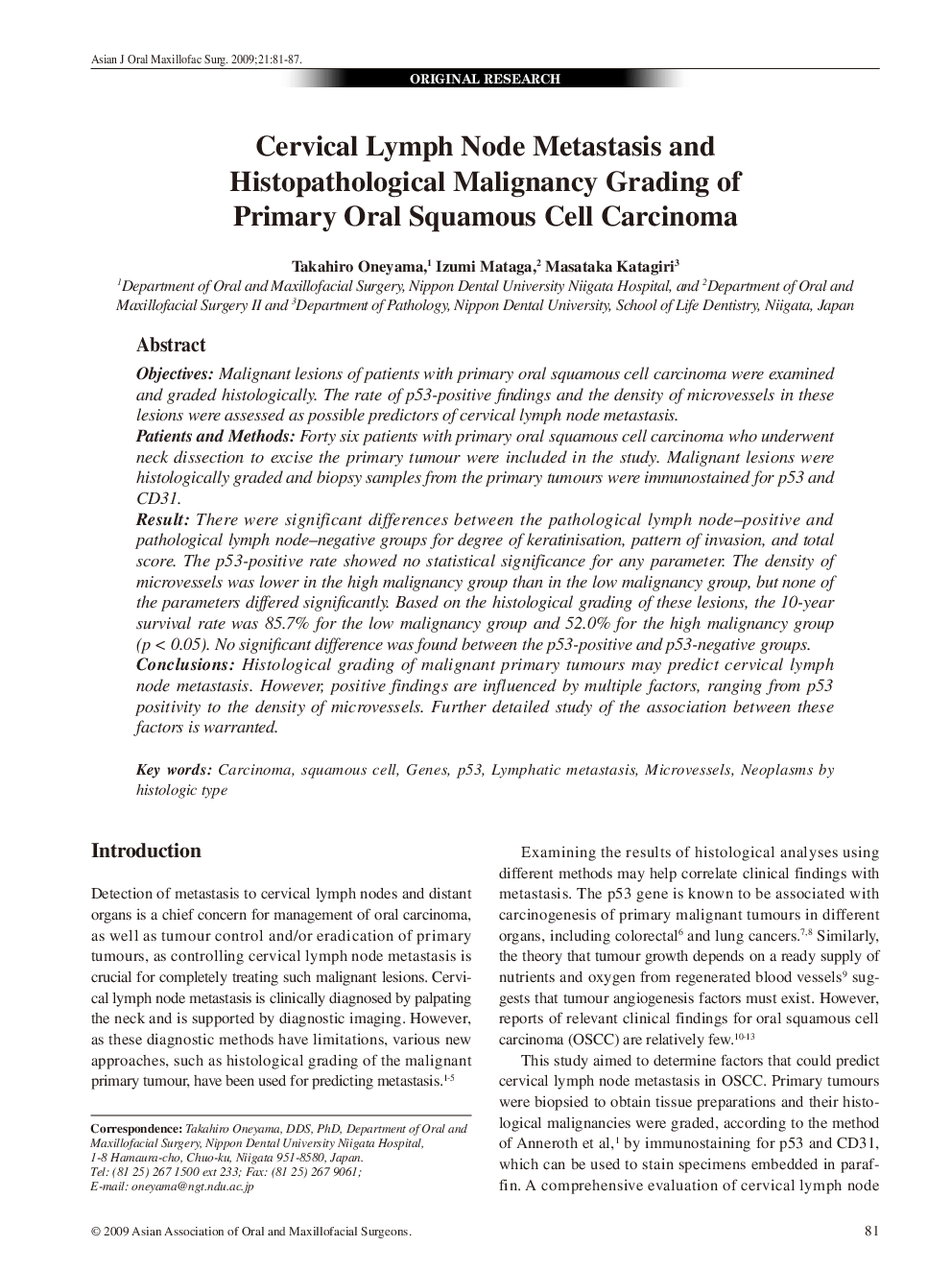| کد مقاله | کد نشریه | سال انتشار | مقاله انگلیسی | نسخه تمام متن |
|---|---|---|---|---|
| 3122170 | 1583508 | 2009 | 7 صفحه PDF | دانلود رایگان |

Objectives: Malignant lesions of patients with primary oral squamous cell carcinoma were examined and graded histologically. The rate of p53 positive findings and the density of microvessels in these lesions were assessed as possible predictors of cervical lymph node metastasis.Patients and Methods: Forty six patients with primary oral squamous cell carcinoma who underwent neck dissection to excise the primary tumour were included in the study. Malignant lesions were histologically graded and biopsy samples from the primary tumours were immunostained for p53 and CD31.Result: There were significant differences between the pathological lymph node—positive and pathological lymph node—negative groups for degree of keratinisation, pattern of invasion, and total score. The p53-positive rate showed no statistical significance for any parameter. The density of microvessels was lower in the high malignancy group than in the low malignancy group, but none of the parameters differed significantly. Based on the histological grading of these lesions, the 10-year survival rate was 85.7% for the low malignancy group and 52.0% for the high malignancy group (p < 0.05). No significant difference was found between the p53-positive and p53-negative groups.Conclusions: Histological grading of malignant primary tumours may predict cervical lymph node metastasis. However, positive findings are influenced by multiple factors, ranging from p53 positivity to the density of microvessels. Further detailed study of the association between these factors is warranted.
Journal: Asian Journal of Oral and Maxillofacial Surgery - Volume 21, Issues 3–4, September–December 2009, Pages 81-87